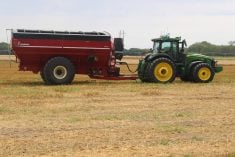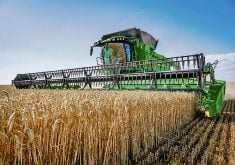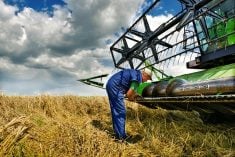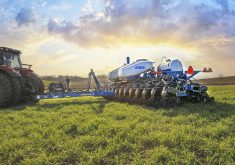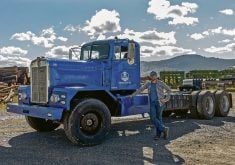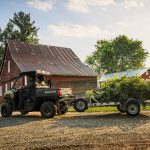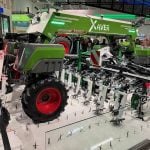Glacier FarmMedia – The new Lexion 6000 series of straw walker combines are designed to be more efficient than their predecessor, the Lexion 760, with the help of an additional separator drum.
Why it matters: The Lexion 760 earned a following with Canadian growers because of its fuel efficiency and precision in crops like wheat, canola and grass seed.
The 466 horsepower Lexion 6900 and 402 horsepower Lexion 6800 include an updated APS Synflow Walker threshing and separation system, which the company says provides the straightest crop flow in the industry.
Read Also
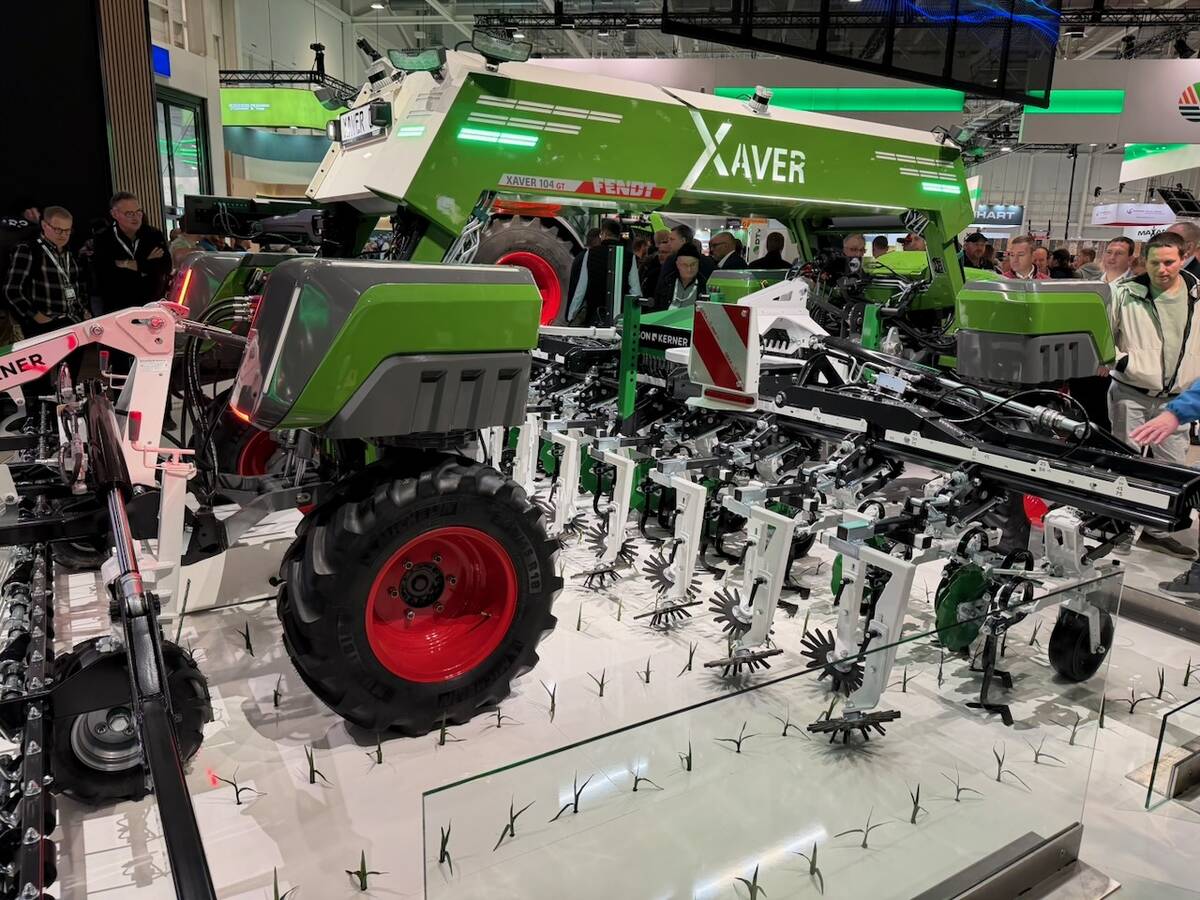
Agritechnica: Robots and more robots, Nexat loves Canada and the trouble with tariffs
Agritechnica Day 4: Robots and more robots, Nexat loves Canada and the trouble with tariffs.
“This is the only straw walker combine to offer an accelerator drum to balance crop flow and to optimize the capacity of the threshing cylinder,” said Patrick Arnold of Claas during an online media launch event on June 16.
“Because of this, the crop feeds more evenly into the threshing cylinder even in wet harvest conditions, and produces higher centrifugal force for more effective separation and can achieve higher throughput, up to 25 percent more acres per hour then a Lexion 670.”
Arnold said the crop flow through the APS threshing system is straighter than competing walker combines, which provides smooth transition of the crop between cylinders, uses less power and causes less stress and twisting on the crop mat that can over thresh the grain and deteriorate straw quality.
The 6000 series combine is built on the 67-inch chassis, which means the feeder-house the crop comes into is 67 inches wide and this width is maintained throughout the machine.
A belt or chain feed is available for the feeder-house. The belt is quieter and has more than double the lifespan of the chain feed, but the belt feed requires more adjustment compared to the chain.
The APS accelerator drum is the first cylinder the crop engages with once it’s through the feeder-house.
About 30 per cent of the crop separation will be done with that APS cylinder, with the disawning plates open.
“There are disawning plates that can either be closed or open on the right side of the feeder house. With them open, you have 30 per cent more separation capacity. With them closed, it holds that crop in there longer so that it has to be engaged with the main threshing cylinder to be threshed,” Arnold said.
Behind the APS cylinder is the main threshing cylinder that is 30 inches in diameter with 10 rasp bars, up from the 24-inch cylinder with eight rasp bars on the Lexion 760.
Behind the main threshing cylinder is the new separation cylinder.
“That’s where we’re going to see that additional 25 per cent capacity with this new 6000 series Lexion,” Arnold said.
The final cylinder inline is the walker impeller that slows down the crop as it comes off the separation cylinder and lands at the front of the straw walker so that the full length of that straw walker is used.
Underneath the threshing unit is the threshing concave that is broken down in two parts, the main threshing concave and the separation concave.
“These two concaves can move together concentrically up or down. They are infinitely variable in their position, however you can manually adjust the gap on the separation concave on the outside of the machine. So on small grains it will be tighter, but on corn you want to open it up a bit further,” Arnold said.
Behind the separation unit are the six straw walkers, similar to what was on the Lexion 670.
Underneath the APS Synflow Walker threshing and separation system is the jet-stream cleaning system, which has been redesigned for the 6000 series.
“That’s because of the increased capacity of this machine. To handle that 25 per cent more threshing and separation capacity, you need more action from your cleaning shoe,” Arnold said.
“The upper sieve does most of your cleaning work, so that’s your primary catch pan, and because of that it has to be really big. This has the largest upper sieve in the industry, the same size as your Lexion 8000 series.”
Arnold said the flat, inline crop flow of the 6000 series combines help make the combines more efficient than competitors, as does dynamic power, which is the system that controls the combine’s power output.
“By automatically adjusting engine output to harvest conditions, dynamic power reduces fuel consumption for up to 10 per cent more saving when the combine does not need to run at peak load,” Arnold said.
The 6000 series uses Cemos automatic, a configuration system that constantly and automatically sets separation and cleaning functions to match combine settings to the threshing conditions.
A rotatable concave bar can either be rotated in from the cab on a button, or can be rotated in by a handle on the side of the machine.
Claas offers push-button control of threshing speed, chopper speed and residue-size control from inside the cab.
The Lexion 6000 series combines have the largest grain tank available in their class, ranging from 385 to 425 bushels.
“Just like the Lexion 8000 and 7000 series, the unloading tube on the Lexion 6000 series has increased capacity and unloads at an industry leading 5.1 bushels per second,” Arnold said.
The capacity of the clean grain elevator has been increased to 8000 bushels per hour.
The Lexion 6000 series combine is available with tires or Terra tracks and both have a maximum speed of 25 miles per hour, and rear wheel drive is optional.
“The rear axle is a four-link rear axle, that’s new on the 6000 series. So that helps the machine turn a lot tighter, and you’ll notice as it’s turning in the field that these tires lean pretty aggressively,” Arnold said.
This article was originally published at The Western Producer.





